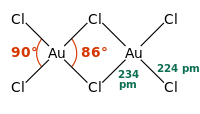
Photo from wikipedia
Abstract Controlling reaction selectivity represents a fundamental challenge in heterogeneous catalysis. Here, we compare the selectivity in aqueous-phase thermal catalytic and electrocatalytic conversion of furfural and report the fundamental difference… Click to show full abstract
Abstract Controlling reaction selectivity represents a fundamental challenge in heterogeneous catalysis. Here, we compare the selectivity in aqueous-phase thermal catalytic and electrocatalytic conversion of furfural and report the fundamental difference in elementary steps in the two reaction systems. Specifically, we observed that furfural alcohol and 2-methylfuran, which is the hydrogenation and hydrogenolysis product of furfural, respectively, are both primary products in electrocatalysis over a Cu electrode, with 2-methylfuran dominating the product distribution under electrode potentials between − 0.55 and − 0.75 V versus RHE. By contrast, in an aqueous-phase thermal reaction using a SiO 2 -supported Cu catalyst, furfural alcohol and its derivatives from the ring-rearrangement reaction are the major products, without production of 2-methylfuran, at the reaction temperature between 140 and 200 °C. We propose that the distinct selectivity trends for oxygenate conversion via thermal and electrocatalytic reduction result from the distinct sequence of proton attack to the aldehyde group and may be generally true for reduction reactions of other biomass-derived oxygenates. Graphic abstract
Journal Title: Journal of Applied Electrochemistry
Year Published: 2020
Link to full text (if available)
Share on Social Media: Sign Up to like & get
recommendations!